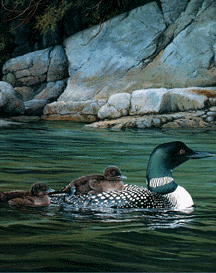This is an image of ducks - lifeforms on Earth.
Click on image for full size
Perfect Vision Graphics
Life on other Planets
Life as we know it on earth requires a certain environment to survive. Even so, there are creatures on earth which seem to be able to survive in
harsh environments, where the temperatures are very cold, or where there is little water or oxygen. It is environments like these which are similar to those found on other planets.
Sophisticated creatures are relative newcomers on Earth compared to primitive bacteria or archaea. They arrived later because Earth proved to be a healthy environment over a long period of time. Because the environment of other planets is more primitive, life on other planets may be primitive.
If not, then life would have developed the ability to withstand otherworldly environments as well as finding material for food. We might have to imagine what such creatures would be like.
All life as we know it leaves behind certain signs that it has been there. Scientists have recently discovered signs of possible past life on Mars, but no evidence yet of these signs elsewhere in the solar system.
Here we present a look an the environments of some places in the solar system; Mercury, Venus, Mars, Jupiter, Io, Europa, Saturn, Titan, other moons, Uranus, Neptune, Triton, Pluto, comets, and interstellar space.
You might also be interested in:
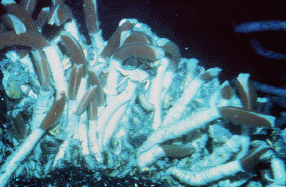
Some animals can live without light or oxygen. Some can live in very cold places or very hot ones. Some live underwater, while others live on land. All animals are different and need different things
...more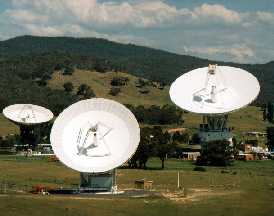
Most forms of life leave behind signs that they are there. Plants help make oxygen and some creatures help make nitrogen. People leave behind smog, television signals, and garbage. Scientists find life
...more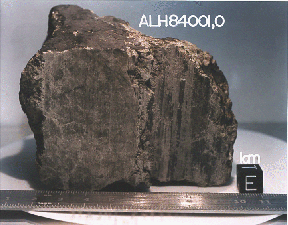
In July, 1996 a team of scientists said that they had discovered possible fossils of bacteria in a meteorite named ALH84001 that came from Mars. It was found in Antarctica in 1984 after having landed there
...more
Jupiter's atmospheric environment is one of powerful winds, going 250 miles per hour, and temperatures from -270 degrees to +32 degrees (freezing temperature). These winds make it hard for life forms to
...more
Saturn's atmospheric environment is one of powerful winds, going 250 miles per hour, and temperatures from -270 degrees to +80 degrees. With winds like these, it is hard to have peace and quiet. The region
...more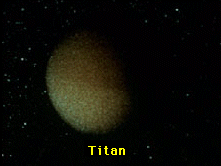
The air of Titan is a lot like the Earth's, except that it is very cold, from -330 degrees to -290 degrees! Like the Earth, there is a lot of Nitrogen and other complex molecules. There also may be an
...more
Organisms that are able to "make their own food" are called autotrophs, meaning "self-feeders". Some examples of autotrophs are plants and algae (shown in the picture). Both plants and algae use photosynthesis
...more


